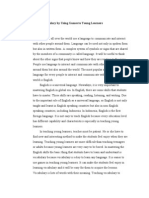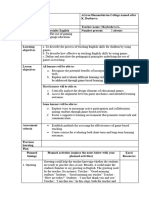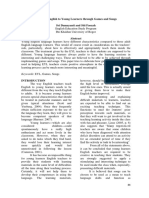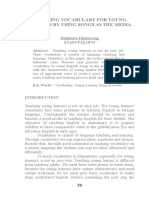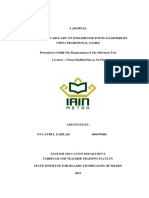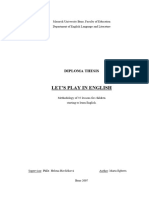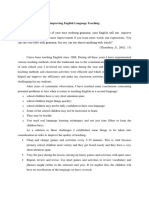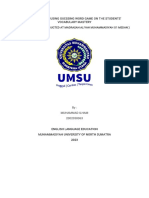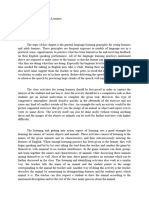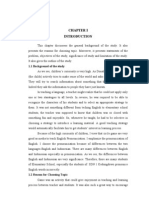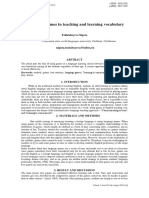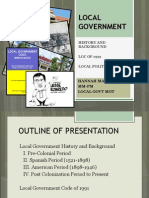0% found this document useful (0 votes)
156 views16 pagesDescriptive Study
The document discusses teaching English to young learners. It defines key terms like teaching, young learners, and games. Teaching involves showing others how to do something and facilitating learning. Young learners are typically ages 6-12 years old. They have short attention spans but are enthusiastic learners. The document notes that games are an effective teaching technique for young learners, as they promote engagement and help students learn in an enjoyable way.
Uploaded by
Sayote TeCopyright
© © All Rights Reserved
We take content rights seriously. If you suspect this is your content, claim it here.
Available Formats
Download as DOCX, PDF, TXT or read online on Scribd
0% found this document useful (0 votes)
156 views16 pagesDescriptive Study
The document discusses teaching English to young learners. It defines key terms like teaching, young learners, and games. Teaching involves showing others how to do something and facilitating learning. Young learners are typically ages 6-12 years old. They have short attention spans but are enthusiastic learners. The document notes that games are an effective teaching technique for young learners, as they promote engagement and help students learn in an enjoyable way.
Uploaded by
Sayote TeCopyright
© © All Rights Reserved
We take content rights seriously. If you suspect this is your content, claim it here.
Available Formats
Download as DOCX, PDF, TXT or read online on Scribd
/ 16

